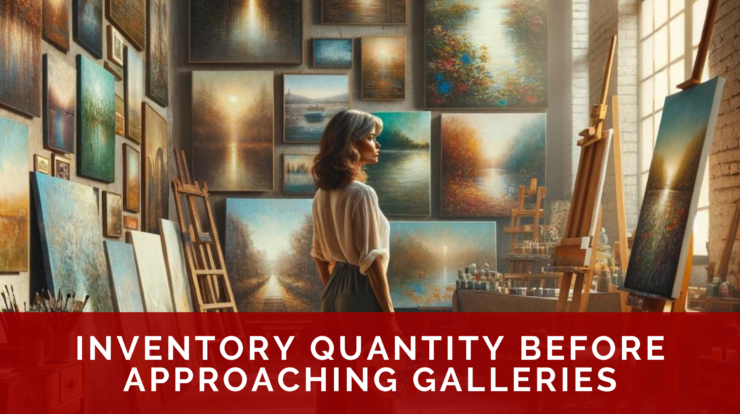
As someone deeply entrenched in the art world, both through my gallery and my advisory role for artists, I’ve encountered numerous talented individuals hesitating at the precipice of gallery representation. The common thread among these concerns? The daunting pressure of production and the fear of not meeting demand. However, from my experience, there’s a strategic approach that can significantly alleviate these worries and pave the way for a successful partnership with galleries.
I understand the anxiety that comes with the thought of needing to replenish sold works rapidly. It’s a concern that resonates with many artists I’ve worked with. The creative process is inherently delicate and varies greatly from one individual to another. Some artists thrive under the pressure of deadlines, while others find that their creativity flows more freely without the looming shadow of expectations. Acknowledging and respecting this diversity in creative processes is crucial in formulating a strategy that benefits all artists.
The approach I advocate for involves preparing a substantial body of work prior to approaching galleries. This isn’t about mass-producing art; it’s about building up a collection thoughtfully and at your own pace. A cohesive set of around 25 pieces, for example, can serve as a solid foundation for your portfolio. This strategy does more than just ease the pressure; it provides you with a buffer that allows for the natural ebb and flow of your creative output.
This buffer is not merely a safety net; it’s a strategic tool that can guide your journey through the art market. It ensures that as you embark on relationships with galleries, you’re not caught off guard by the pace at which your work sells. If a gallery sells a dozen of your pieces in a year, aim to match or exceed that number in your production. This keeps the relationship buoyant and ensures that you’re replenishing your inventory at a pace that feels manageable and stress-free.
Moreover, the success of this approach can embolden you to expand your horizons, seeking representation in additional galleries. Keeping an eye on your reserves will help you determine when you’re ready to take this step, ensuring that you’re not overextending yourself.
It’s also important to highlight the nature of the artist-gallery relationship. Far from the cold, transactional dynamic some fear, a healthy partnership with a gallery is built on mutual respect and encouragement. Galleries that genuinely believe in your work will want to see you succeed and will offer support rather than pressure. This positive environment can significantly mitigate the stress associated with production demands, making the creative process more enjoyable and fulfilling.
In sharing this advice, my goal is to demystify the process of gallery representation and encourage artists to take that leap of faith. While challenges and anxieties are part of the journey, they can be navigated with the right strategy and mindset. By building a significant body of work at your own pace and fostering constructive partnerships with galleries, you can embark on a rewarding path in the art world.
Remember, the art market is as dynamic as the art itself. With a strategic approach and an understanding of the market dynamics, you can transform potential anxieties into opportunities for growth and success. Let your art lead the way, and don’t shy away from the opportunities that gallery representation can offer.
